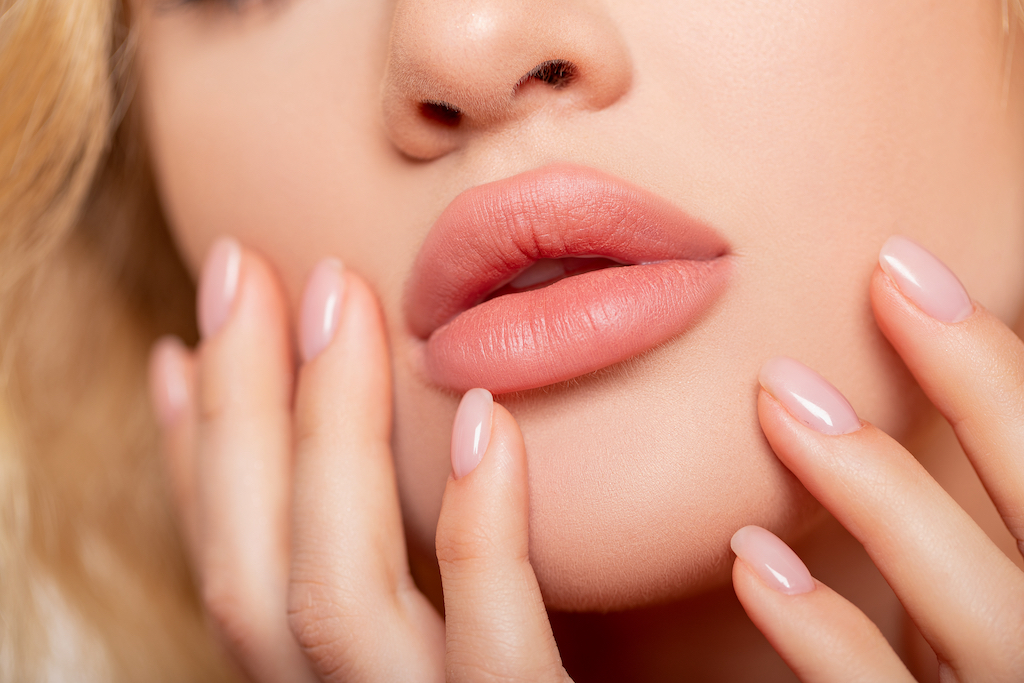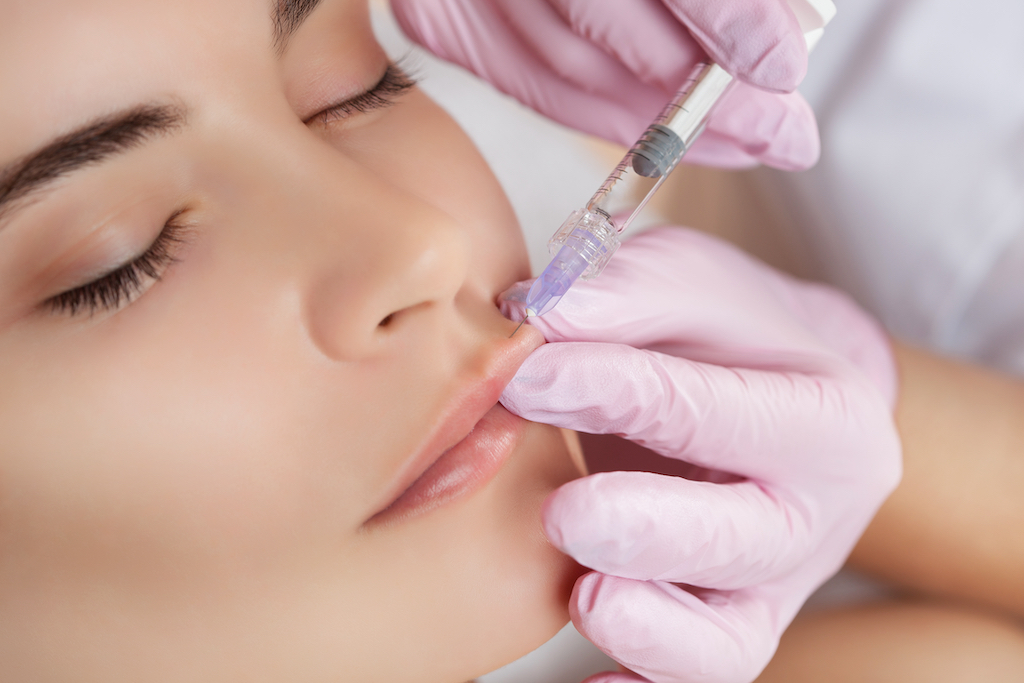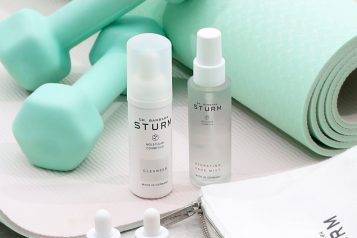 Photo Credit: Shutterstock
Photo Credit: Shutterstock
Looking to augment your lip's fullness, shape, and projection? Lip fillers are the best non-surgical, minimally invasive option for changing the appearance of the lips. Now, whether you want them to be extra plump or subtle, is your choice.
Before undergoing any treatment, fillers or not, it is important to understand what you are getting yourself into! We can't stress that enough. Nevertheless, at least know your facts (from an expert,*wink wink*). Did you know that lip volume has been demonstrated to decrease with age or that the plumpness of lip tissue is associated with a youthful appearance? To get an overview of all the details, Haute Beauty experts Alan Weidman, Lauren Valentine, and Dr. Samuel Lin, MD, FACS, tell all.
Types of Fillers
Lip filler injections are given with the main purpose of adding lip volume, shape, and symmetry. The most common lip fillers consist of hyaluronic acid, a substance that is naturally produced by the body and attracts water to give a fuller appearance2. Other lip fillers include biostimulators, which are intended to stimulate collagen production in the tissue.
There are various hyaluronic acid products on the market, with more being developed constantly. The most common trade names include Restylane, Juvederm, and Belotero products. Different hyaluronic acid products have varying physical characteristics, including molecular sizes, formulations, mechanism of cross-linking, and water absorption3. These variations have different clinical implications in terms of appearance and longevity.
The Process
Since the lips can be a sensitive area, some providers will apply topical or injectable anesthetic cream around fifteen minutes before administering injections. The actual treatment time is short, typically lasting anywhere from 15-30 minutes. Providers may massage the injected area to ensure that the hyaluronic acid is in the proper location for the desired shape. Results should be immediately apparent but may look slightly exaggerated due to the presence of immediate edema at the injection site1. An appealing feature of hyaluronic acid fillers is that they are reversible. If the patient dissatisfaction or inappropriate placement of filler, an injection of an enzyme known as hyaluronidase can dissolve the hyaluronic acid.
 Photo Credit: Shutterstock
Photo Credit: Shutterstock
Post Lip Filler Care
Aftercare following the procedure is usually brief. Patients may use ice for 24-48 hours following injection to limit swelling and bruising. Additionally, patients are instructed to hold off from touching or manipulating the lips for the first 24 hours, which includes avoiding applying topical lip products or drinking through straws7. Your physician may also schedule a follow-up procedure in several weeks to assess the progress of your lips and address any concerns.
Longevity
Hyaluronic acid injections can last anywhere from three to twelve months, with an average duration of six months. The longevity of the product also depends on various product-specific and patient-specific factors4. Regarding the properties of the individual filler, the concentration of hyaluronic acid in the filler results in a longer duration of action. Similarly, larger particle size has been shown to increase longevity5. It has been postulated that patient metabolism plays a role in the duration of fillers, with faster metabolisms being able to break down the enzymes within the filler more quickly6. Getting hyaluronic acid to fill the lips typically lasts for a shorter period than when treating other areas of the face, including the nasolabial folds, tear troughs, glabellar regions, and forehead1.
Cost
Lip fillers are a cosmetic procedure and, therefore, not covered by insurance. The cost of lip fillers can be variable, based on the specific product, region, physician, and the patient’s aesthetic goals. On average, lip fillers cost anywhere from $500-$1000, but can be more expensive, with some treatments costing $2000 and above, especially when multiple treatments are required to meet a patient’s goals.
References
- Rohrich RJ, Ghavami A, Crosby MA. The role of hyaluronic acid fillers (Restylane) in facial cosmetic surgery: review and technical considerations. Plast Reconstr Surg. 2007;120(6 Suppl):41S-54S. doi:10.1097/01.prs.0000248794.63898.0f
- Master M. Hyaluronic Acid Filler Longevity and Localization: Magnetic Resonance Imaging Evidence. Plast Reconstr Surg. 2021;147(1):50e-53e. doi:10.1097/PRS.0000000000007429
- Rohrich RJ, Bartlett EL, Dayan E. Practical Approach and Safety of Hyaluronic Acid Fillers. Plast Reconstr Surg Glob Open. 2019;7(6):e2172. Published 2019 Jun 14. doi:10.1097/GOX.0000000000002172
- Haneke E. Managing Complications of Fillers: Rare and Not-So-Rare. J Cutan Aesthet Surg. 2015;8(4):198-210. doi:10.4103/0974-2077.172191
- Gold MH. Use of hyaluronic acid fillers for the treatment of the aging face. Clin Interv Aging. 2007;2(3):369-376. doi:10.2147/cia.s1244
- Dayan SH, Ellis DA, Moran ML. Facial fillers: discussion and debate. Facial Plast Surg Clin North Am. 2012;20(3):245-264. doi:10.1016/j.fsc.2012.05.004
- Cleveland Clinic. Lip Fillers. Updated 12/1/2021. Accessed August 17, 2022. https://my.clevelandclinic.org/health/treatments/22133-lip-fillers
For more information, visit Dr. Samuel Lin's social media:





















